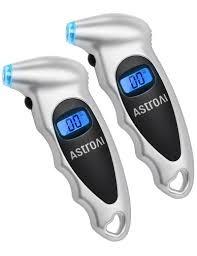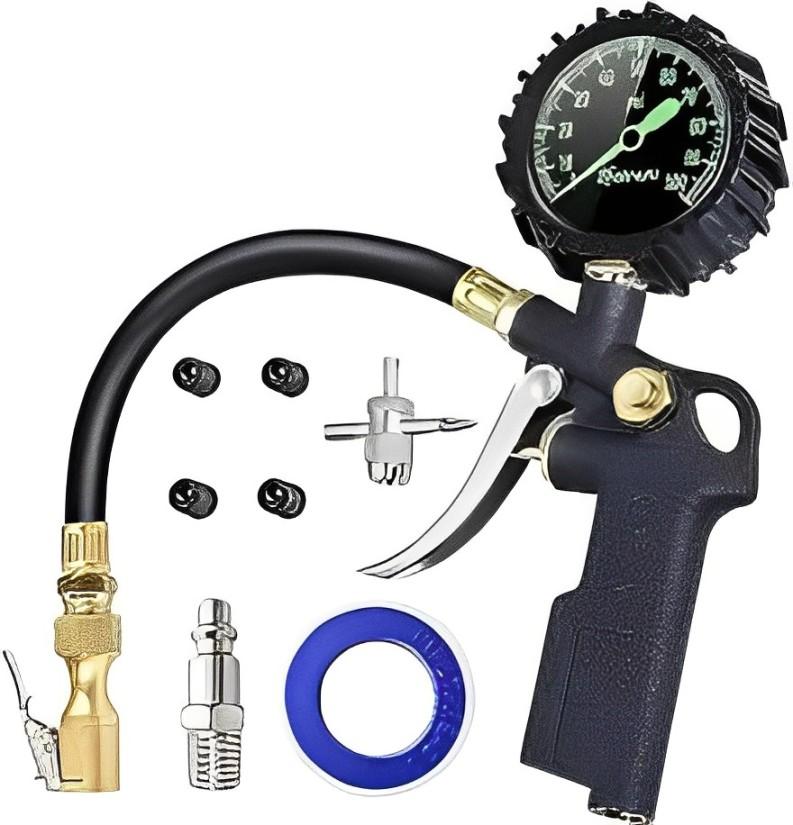Proper tire maintenance is a cornerstone of vehicle safety and performance. At the heart of this is understanding the readings from your tire pressure gauges. These readings provide critical information about the state of your tires and, by extension, your vehicle’s overall safety. Brands like AstroAI are dedicated to offering reliable, high-quality tire air pressure gauge to help drivers maintain the correct tire pressure. In this article, we will explore how to interpret the readings from your tire pressure gauge and what these numbers are actually telling you.
Why Tire Pressure Matters
Maintaining the correct tire pressure is crucial for multiple reasons. Not only does it ensure optimal contact between your tires and the road, but it also improves fuel efficiency, reduces wear and tear, and enhances safety by providing better handling and stability. Using a precise tool, like an AstroAI tire air pressure gauge, is essential for getting accurate readings and maintaining optimal tire pressure.
Types of Pressure Gauges and Their Readings

There are several types of tire pressure gauges, each with its own method of displaying readings:
- Digital Tire Air Pressure Gauges: These gauges provide an easy-to-read digital display, often with backlit screens for use in low light. AstroAI’s digital models, for example, offer highly accurate readings and user-friendly designs, making them a popular choice for many drivers.
- Analog Pressure Gauges: These gauges use a dial with a needle to indicate pressure. While analog gauges are durable and straightforward, they can sometimes be less precise than digital options.
- Stick Gauges: These are compact and inexpensive, but they often lack the accuracy and ease of use provided by digital or high-quality analog gauges.
No matter the type, the readings from these gauges will be in PSI (pounds per square inch) or BAR (a metric unit of pressure). Most vehicles specify the recommended tire pressure in PSI, which can be found in your vehicle’s manual or on a sticker inside the driver’s side door.
Interpreting Your Tire Pressure Gauge Readings
When you use a tire pressure gauge, the reading it gives you is a measure of the air pressure inside your tire. Here’s what different readings could mean:
- Too Low (Under-Inflation): If the reading from your tire air pressure gauge is lower than the recommended PSI, it indicates under-inflation. This can cause increased tire wear on the edges, reduce fuel efficiency, and lead to poor handling. Under-inflated tires can also overheat, increasing the risk of a blowout.
- Too High (Over-Inflation): If the gauge reading is higher than the recommended PSI, it indicates over-inflation. Over-inflated tires can cause a harsh ride, reduced traction, and increased wear in the center of the tire tread. This can also make the tire more susceptible to damage from potholes or debris.
- Just Right: A reading that matches your vehicle’s recommended tire pressure means your tires are properly inflated, ensuring optimal performance, safety, and longevity.
How to Use Your Tire Pressure Gauge Correctly
- Find the Recommended Tire Pressure: Before you check your tire pressure, find the correct PSI for your vehicle in your owner’s manual or on the sticker located on the driver’s side door jamb.
- Prepare Your Tire Pressure Gauge: Whether you’re using an AstroAI digital or analog gauge, make sure it is ready for use. For digital models, ensure they have functioning batteries.
- Remove the Valve Cap: Unscrew the cap on the tire’s valve stem.
- Take the Reading: Press the gauge onto the valve stem until you hear a slight hiss of air. Hold it steady until you get a reading. Digital gauges will display the PSI instantly, while analog gauges will show the reading on the dial.
- Compare with Recommended PSI: Match your gauge reading with your vehicle’s recommended PSI. If adjustments are needed, either add or release air accordingly.
Tips for Accurate Readings
- Check When Tires Are Cold: Tire pressure can fluctuate with temperature changes, so for the most accurate reading, check your tire pressure when your tires are cold – ideally in the morning before you start driving.
- Regular Checks Are Key: It’s essential to check your tire pressure at least once a month and before long trips. Changes in weather, road conditions, and load can all affect tire pressure.
Why Choose AstroAI Pressure Gauges?

AstroAI offers a range of high-quality tire air pressure gauges designed for accuracy, durability, and ease of use. With features like backlit digital displays, ergonomic designs, and robust construction, AstroAI’s gauges ensure you get a precise reading every time. By investing in a reliable pressure gauge from AstroAI, you’re taking a crucial step toward better vehicle maintenance and safer driving.
Conclusion
Understanding what your tire pressure gauge readings mean is a critical component of tire maintenance. By regularly checking your tire pressure with a quality gauge, like those from AstroAI, you can extend the life of your tires, improve fuel efficiency, and ensure a safer driving experience. Remember, a small investment in the right tools today can save you from bigger expenses and safety risks down the road.


